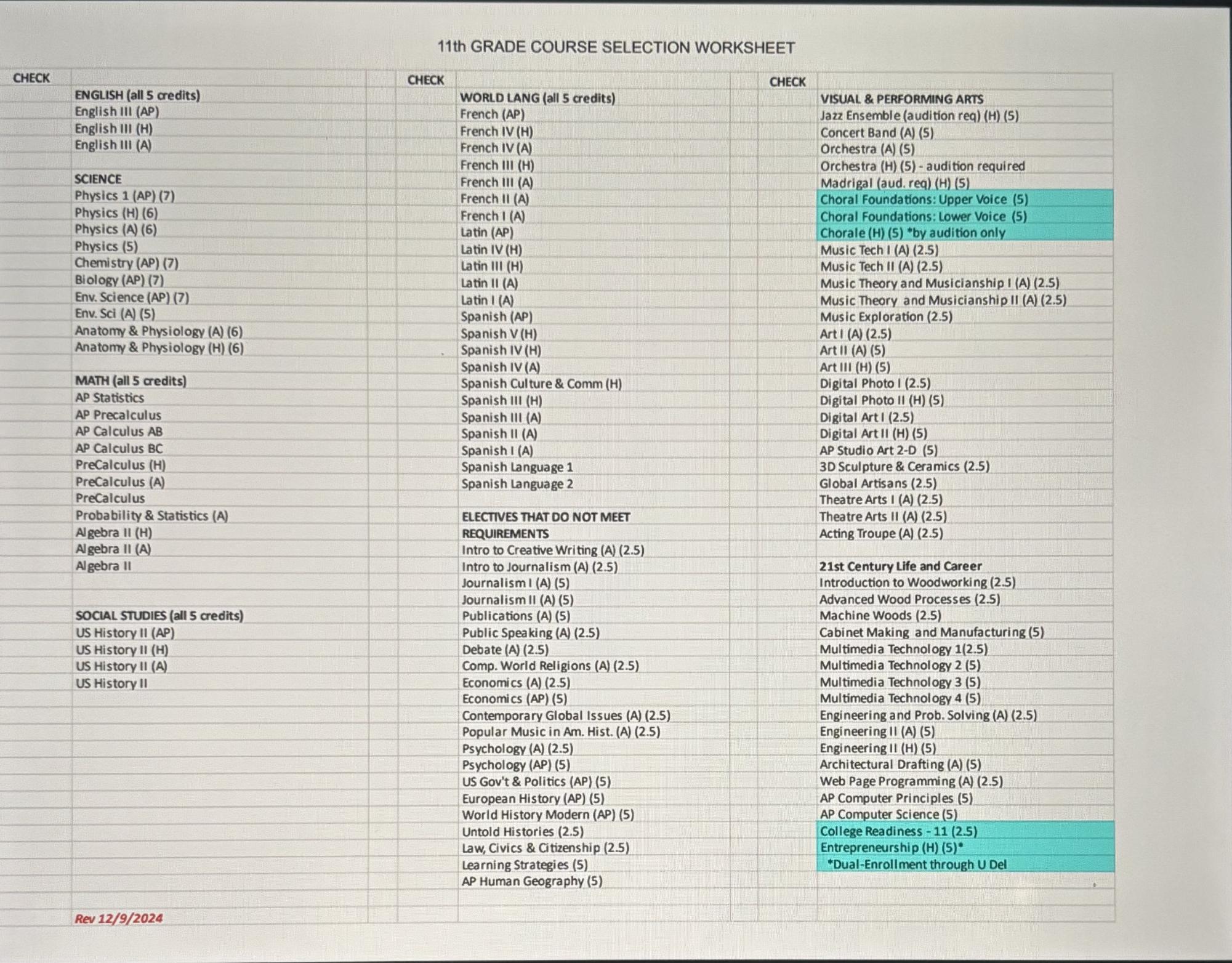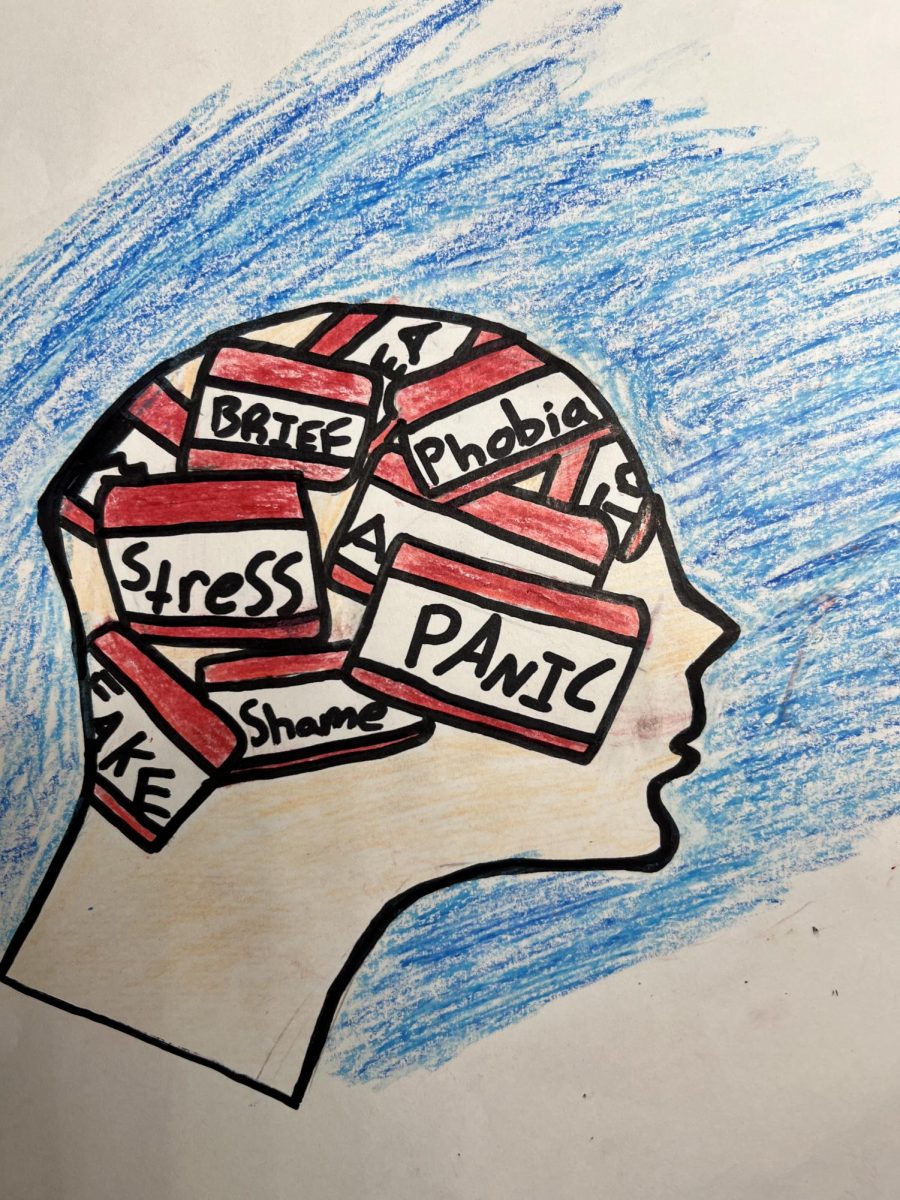In a time when college can be daunting, and prices seem to skyrocket, a student needs to do all that they can to ensure the price of education does not follow them through their adulthood. In Bernards High School, there are certain classes that offer dual enrollment credits to those taking that class. Dual enrollment classes are programs that allow high school students to receive college credit for certain courses they take. Bernards offers a variety of these programs for students to take.
While the dual enrollment programs cannot prevent students from paying for the credits they receive, the price is significantly reduced. Students must sign a permission slip and send a check to participate in dual enrollment programs. Dual enrollment courses are an excellent cost-effective alternative then taking the course in college where the price is significantly increased.
In the 2024-2025 school year, Multivariable Calculus (H) and Tomorrow’s Teachers (H) offered dual enrollment credit. For the 2025-2026 school year, Entrepreneurship (H) will also be offered, and the school is working with a variety of colleges to introduce more.
The course may include information you would gain from a 10-1 college class and includes field experience for the topic of interest. If you are training to become a teacher, for instance, field experience is something a student generally is not exposed to until they are a senior in college.
“This really gives kids an opportunity to see if this is the place they really wanna be, and if it is, I think it certainly gives them a leg up on kids going into those programs,” said Mrs. Volosin, administrator for Tomorrow’s Teachers.
Students are exposed to the careers they are debating entering, and are not only able to receive valuable information and learning experience but are also able to gauge whether or not the career is something they want to follow through with.
“You get about three credits for taking the Tomorrow’s Teachers course. [Students] pay about $250 to get those credits through Cain. But if you were a college student, usually it’s about $1,000 of credit. So if we have an opportunity to have students, not just through AP programs, but for their own programs, rack up all of these credits, they can potentially be graduating early or have more time to study abroad, or just save you a ton of money,” said Mrs. Volosin.
If one is interested in a career in which their school offers a dual enrollment program, then the student should take the course if they are able as it provides both a financial advantage and a skills advantage.
Journalism is one of the programs being advocated to receive dual enrollment credit. Journalism should be a dual enrollment program as students who stay with the program for multiple years generally want to pursue a career in the media industry. Dual enrollment greatly benefits the students who are looking to pursue education in that subject in college, thus, receiving college credit for a course a student will need to take in college will be beneficial for one’s future.
The school is working with journalism advisor Mrs. Hunkele to include dual enrollment in the journalism program.
“I think any time you get to step outside of the high school building and give students real-life examples of a career that they might potentially be entertaining as something that they’re interested in doing for their life, I think it can only benefit students,” said Mrs. Hunkele, “I also believe that the world of journalism is changing so quickly that a partnership with a university will help expose students to a higher level of journalism and potentially a closer to real life example than we may be able to offer just at a high school level.”
Programs such as dual enrollment courses offer valuable insight into real circumstances that one may encounter while working in that field. This is not only valuable for students to witness what they are going to experience in college or the real world but also allows students to gauge whether or not they are interested in this career.
A typical dual enrollment high school class usually earns three college credits, although credit received may vary based on the high school attended, the college partnered with, and the program receiving credit.
“I think [dual enrollment] an interesting opportunity, and any chance we can get to reward students who are working really diligently in a specific area of their studies in order to prepare themselves for what they’re going to next, whether that’s internships or college or trade schools,” said Mrs. Hunkele, “I think that’s beneficial to the students in a million different ways.”
Bernards High School, in giving students access to programs such as these, is only benefitting the students’ success rates for high school, college, and their future.








